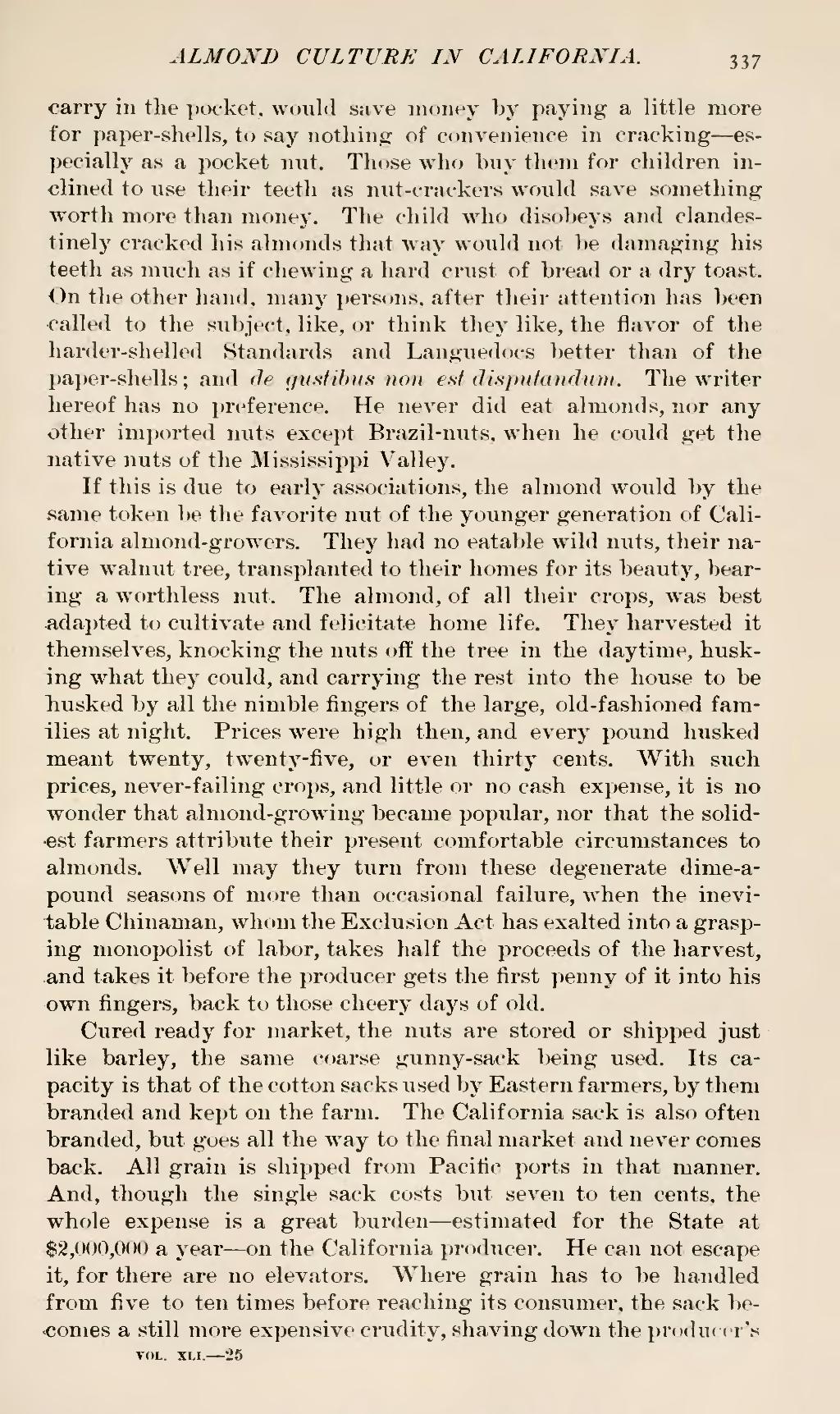carry in the pocket, would save money by paying a little more for paper-shells, to say nothing of convenience in cracking—especially as a pocket nut. Those who buy them for children inclined to use their teeth as nut-crackers would save something worth more than money. The child who disobeys and clandestinely cracked his almonds that way would not be damaging his teeth as much as if chewing a hard crust of bread or a dry toast. On the other hand, many persons, after their attention has been called to the subject, like, or think they like, the flavor of the harder-shelled Standards and Languedocs better than of the paper-shells; and de gustibus non est disputandum. The writer hereof has no preference. He never did eat almonds, nor any other imported nuts except Brazil-nuts, when he could get the native nuts of the Mississippi Valley.
If this is due to early associations, the almond would by the same token be the favorite nut of the younger generation of California almond-growers. They had no eatable wild nuts, their native walnut tree, transplanted to their homes for its beauty, bearing a worthless nut. The almond, of all their crops, was best adapted to cultivate and felicitate home life. They harvested it themselves, knocking the nuts off the tree in the daytime, husking what they could, and carrying the rest into the house to be husked by all the nimble fingers of the large, old-fashioned families at night. Prices were high then, and every pound husked meant twenty, twenty-five, or even thirty cents. With such prices, never-failing crops, and little or no cash expense, it is no wonder that almond-growing became popular, nor that the solidest farmers attribute their present comfortable circumstances to almonds. Well may they turn from these degenerate dime-apound seasons of more than occasional failure, when the inevitable Chinaman, whom the Exclusion Act has exalted into a grasping monopolist of labor, takes half the proceeds of the harvest, and takes it before the producer gets the first penny of it into his own fingers, back to those cheery days of old.
Cured ready for market, the nuts are stored or shipped just like barley, the same coarse gunny-sack being used. Its capacity is that of the cotton sacks used by Eastern farmers, by them branded and kept on the farm. The California sack is also often branded, but goes all the way to the final market and never comes back. All grain is shipped from Pacific ports in that manner. And, though the single sack costs but seven to ten cents, the whole expense is a great burden—estimated for the State at $2,000,000 a year—on the California producer. He can not escape it, for there are no elevators. Where grain has to be handled from five to ten times before reaching its consumer, the sack becomes a still more expensive crudity, shaving down the producer's

